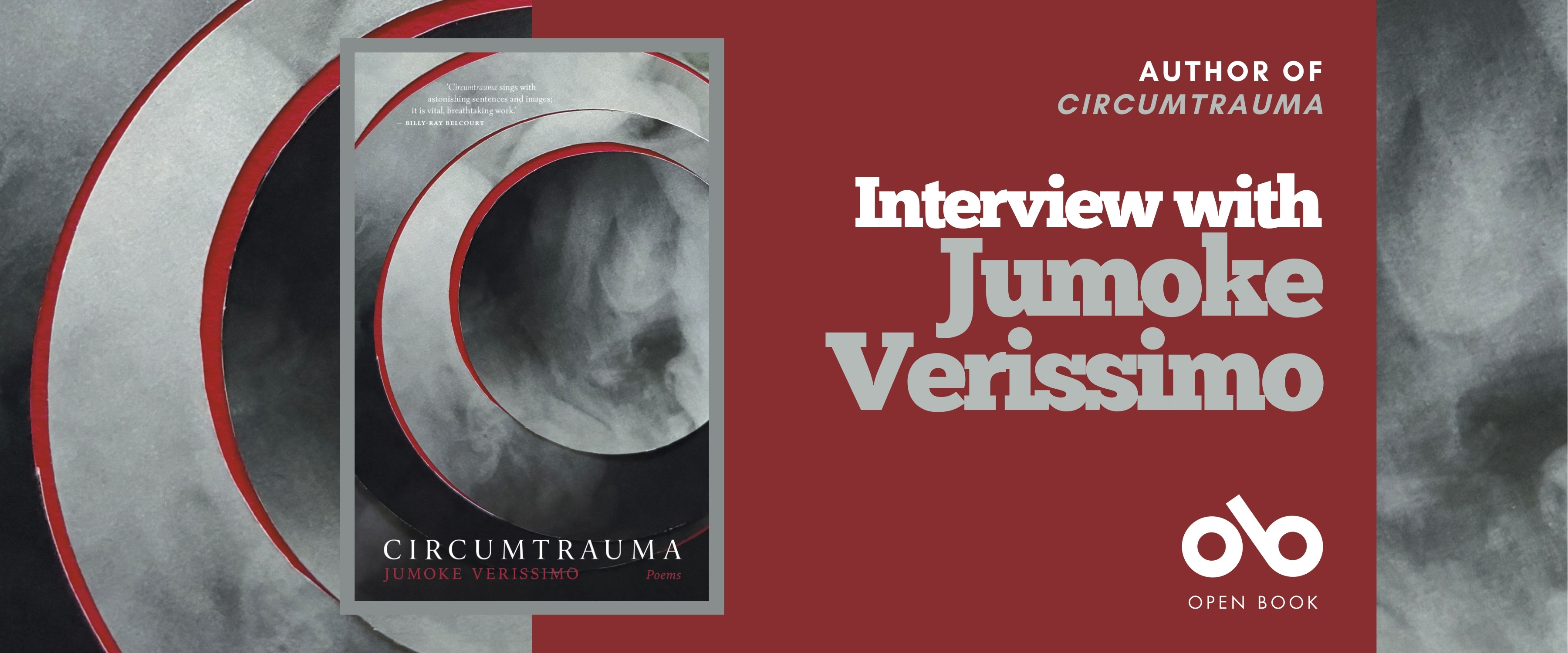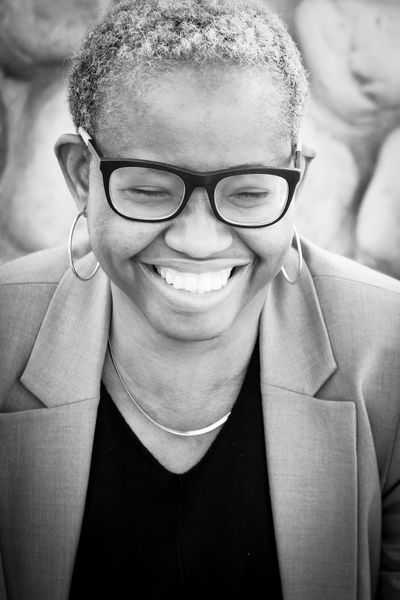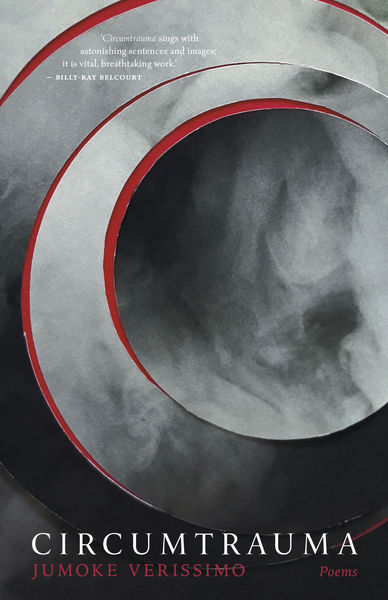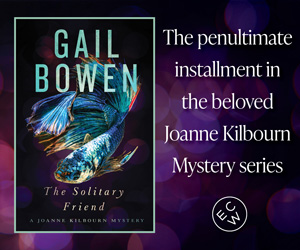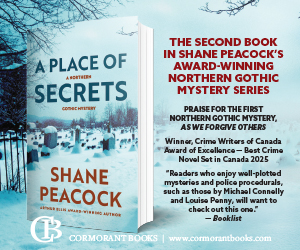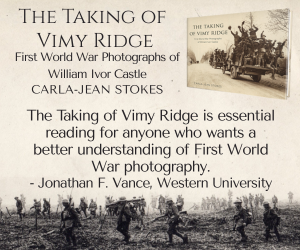Jumoke Verissimo's New Poetry Collection CIRCUMTRAUMA is a Haunting Poetic Reckoning
In the fascinating new collection Circumtrauma (Coach House Books), one of Africa’s most celebrated literary voices turns to poetry to reckon with one of the continent’s most haunting histories. With piercing honesty and lyrical precision, Jumoke Verissimo revisits the Nigeria-Biafra War, a conflict that continues to echo through generations. These poems shine a light on the untold stories of individuals whose pain, resilience, and humanity have too often been erased from the record, transforming history’s absences into art that speaks to the reader with urgency and grace.
Drawing from fragmented testimonies, archival traces, and lived memory, Circumtrauma confronts the war’s lingering shadows. The collection refuses easy reconciliation, instead offering language that cuts and heals in equal measure. Through daring use of form and voice, the poet invites readers to witness not only the devastation of conflict but also the endurance of those who survive it. The result is a vivid, unflinching portrait of how trauma is carried, reshaped, and sometimes transcended through art.
At once personal and collective, Circumtrauma stands as a powerful act of remembrance. It restores complexity to a history too often simplified or ignored and insists on empathy as a political and creative force. In bringing forward stories long buried beneath silence, the author transforms poetry into testimony and invites readers to imagine a future where the wounds of the past might finally begin to heal.
We've got an extraordinarily insightful interview with author today to share with all of our avid poetry readers!
Open Book:
Tell us about this collection and how it came to be.
Jumoke Verissimo:
Some years ago, I began exploring the Nigeria-Biafra War and its lasting emotional legacy for my PhD research. My interest was in how a deep-seated sense of grievance, or ressentiment, shapes social relations in modern Nigeria, and my research revealed a profound truth: the individual pain within this collective experience often remains invisible. That realization became a turning point for me.
As is common with large-scale traumatic events like the War, the collective story of the victimized group becomes a powerful narrative of survival and resilience. When you add the perspectives of observers or perpetrators, the shared narrative becomes a shared identity—a basis for solidarity. But this also simplifies and generalizes the experience, erasing the vast and unique details of each person’s pain or perspective. Those specific moments of fear, loss, and despair are often lost within a broader, more politically useful group narrative.
I reflected on how individuals can fall apart because their stories have no outlet for expression. And that is where my poetry comes in. Circumtrauma is the artistic product of this intellectual and emotional journey. As I wrote in my “Method Note,” I wanted to “explore the braid of individual emotion and collective memory” and “inhabit the emotional narrative of a past generation, their unresolved trauma.”
OB:
Can you tell us about the title and what it represents?
Your CanLit News
Subscribe to Open Book’s newsletter to get local book events, literary content, writing tips, and more in your inbox
JV:
Circumtrauma refers to the emotional weight that surrounds or underlies a war’s narrative and shapes our interactions. It encapsulates the idea of the traumatic story that lingers and becomes a reason for other forms of relationships to exist. The title conveys what the entire collection aims to do: to turn toward the many narratives that live during and after a war, creating the lingering distrust and suffering that hinder identity, politicize memory, and define the relationships between those touched by the conflict.
While a war may end, its fire isn’t extinguished for many generations—it rages on in memory and inheritance. Circumtrauma tries to capture that enduring heat and its human residue.
OB:
Was there research involved in the writing process?
JV:
Absolutely. I began this project as an academic endeavour, and I must admit, I struggled. As an artist—which is my primary identity for expression—I found it difficult to translate complex, deeply felt emotions into the detached language of academic writing. While the research was crucial and provided the historical and theoretical framework, my artistic sensibility required a different approach. The solution wasn’t to write more academic articles but to create—to make certain aspects visible before interpretation could even begin.
OB:
What was the most surprising part of the writing process?
JV:
The most surprising part was that it possessed me, shifting from academic writing into poetry that simply emerged and dictated its own form.
OB:
Did you write the poems individually, or did you envision the full collection from the start?
JV:
I envisioned the entire collection as a cohesive whole from the beginning. Since the material was part of my research, I could see how the poems would speak to each other, creating a larger narrative based on the source texts.
OB:
Who were the most instrumental people in the life of this book?
JV:
This was a collection I was initially afraid to share because of its emotional weight. But my academic supervisors were crucial—they provided the intellectual space and encouragement to pursue this project beyond a traditional dissertation. Their trust in my vision and willingness to let the work evolve into a creative form were invaluable.
I also shared my writing with a close circle of poets and friends who offered not only feedback on craft but also emotional support. They created a safe space for vulnerability, allowing me to explore these difficult topics without fear of judgment. Their belief in the project gave me the courage to continue.
OB:
What’s more important—the way a poem opens or the way it ends?
JV:
Both are equally important. The opening draws you in with the promise of understanding, while the ending never truly resolves. A good ending lingers—it wants you to carry something with you. The opening is a riddle; the ending is the echo.
OB:
What were you reading while writing this collection?
JV:
Beyond the many novels, poetry, and scholarship on the Nigeria-Biafra War, I was also “reading” photographs of the conflict. I turned to conceptual works that stretch the limits of poetic form—Jordan Abel (who was also my editor), M. NourbeSe Philip’s Zong!, Juliane Okot Bitek’s 100 Days, Margaret Christakos’s Dear Birch, Canisia Lubrin’s The Dyzgraphxst, Claudia Rankine’s Citizen: An American Lyric, Taban Lo Liyong, Theresa Hak Kyung Cha’s Dictee, Dionne Brand’s A Map to the Door of No Return, and Christopher Okigbo’s Labyrinths.
These poets taught me that content can live in the residue—where language fractures, where syntax breaks down, where emotion hides in the white space. I learned that the unsaid can sometimes speak most truthfully.
OB:
Did social media play a role in your writing process?
JV:
No, social media did not fit into my writing process for this collection. Writing these poems was about giving voice to deeply personal and often silent stories—the opposite of the public, fast-paced, and distracting nature of social media. However, I did observe how these narratives live in other online forms, and I mention this in the “Method Note.” In the future, I may use social media as a way to engage with readers, but it was not a creative tool for this work.
OB:
Who did you dedicate the collection to and why?
JV:
Symbolically, the book is dedicated to Eledumare—the ultimate source of all creation that never goes empty.
OB:
Is there a single speaker in these poems?
JV:
There isn’t one specific speaker. Because of the conflicting nature of the war, the collection contains a chorus of perspectives. That multiplicity is deliberate—it mirrors the fragmented and collective nature of the experience.
OB:
What advice would you give to emerging poets?
JV:
Be present. So much of the world wants to pull you out of yourself—to disappear. But your work depends on your ability to remain. To be, present.
OB:
What questions were you exploring in this collection?
JV:
“What inhabits the silences of trauma?” was the guiding question. I wanted to use poetry to explore the emotional afterlife of the Nigeria-Biafra War and to ask how emotions sustain collective memory. The tension that emerges from silence is rich with feeling; remembering becomes an act of holding what cannot be said. By focusing on individual voices within collective silence, Circumtrauma reveals the emotional truths that dominant narratives leave behind.
OB:
For you, is form freedom or constraint in poetry?
JV:
For me, form is a way to find freedom within structure. I often envision a collection’s structure before writing—the shape a poem wants to take. In Circumtrauma, that structure was inspired by the Ifá divination system, an ancient Yoruba tradition that uses a binary framework. Each of the four sections contains sixteen poems, and the length of each poem was determined by numerical conversions from the Ifá system.
This may sound restrictive, but it offered immense creative freedom. I used this framework to compose “cut-up” poems, rearranging source texts to create new narratives that reflect the chaos of memory. The strict form became a vessel for disorder—a way to express the fragmented persistence of trauma.
OB:
What are you working on next?
JV:
I’m working on many projects, including poetry—but I’m too superstitious to share the details just yet. I want to give them room to breathe.
_________________________________
Jumoke Verissimo is a poet and novelist living in Toronto. She is the author of two well-recognized collections: i am memory and The Birth of Illusion, both published in Nigeria and nominated for different awards, including the Nigerian Prize for Literature. Her most recent novel, A Small Silence, received critical acclaim and was nominated for several awards, includingthe Edinburgh Festival First Book Award and the RSL Ondaatje Prize. It won the Aidoo-Snyder Book Prize. Her writing explores traumatic re/constructions of everyday life and its intersection with gender, focusing on themes of love, loss, and hope. She currently teaches Creative Writing at Toronto Metropolitan University.
